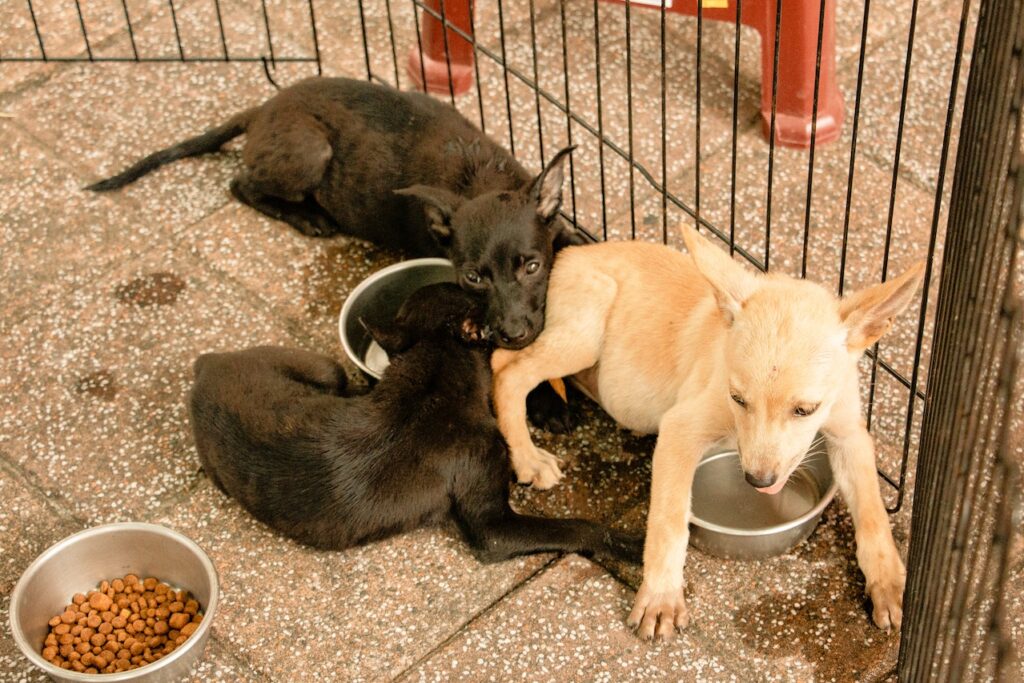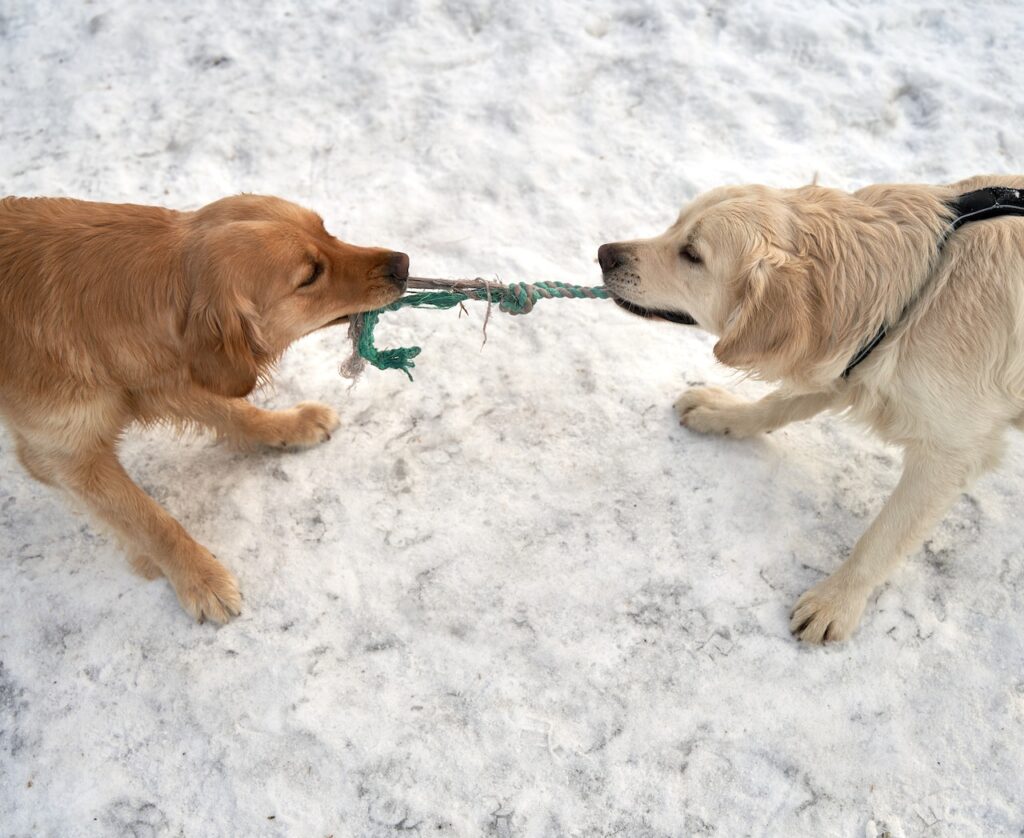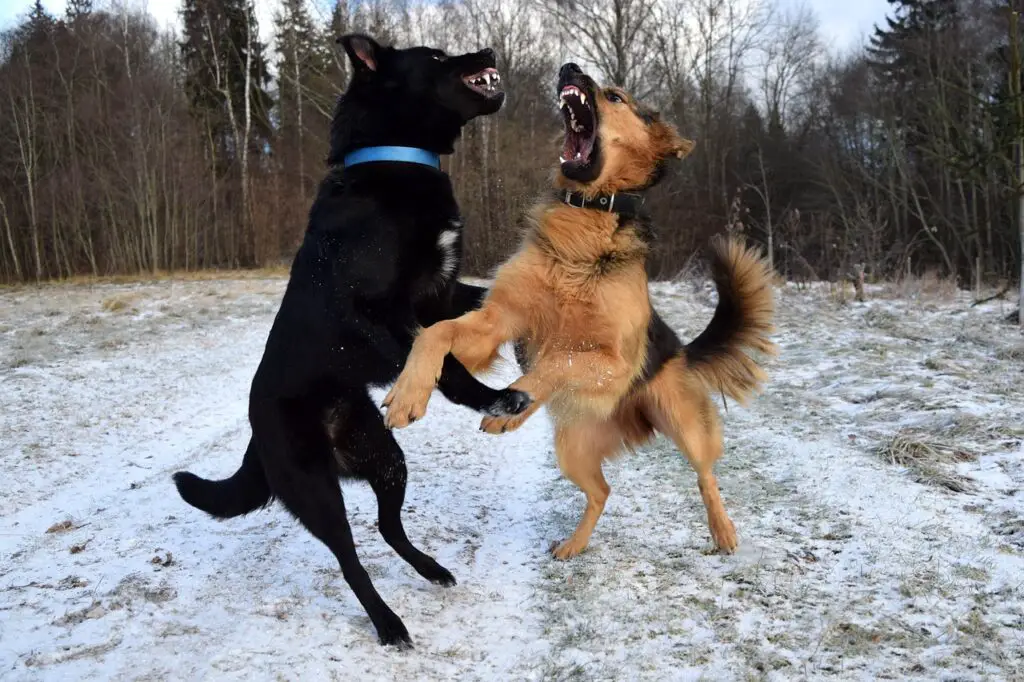When dogs have disagreements that turn into fights, it’s natural to wonder how to handle the situation. Knowing how to discipline your dog after fighting. It’s not about scolding or being harsh; it’s about finding the right approach to ensure a harmonious relationship and a safe environment for everyone involved.
In this guide, we’ll explore simple and effective ways to handle post-fight behavior and restore peace in your furry friend’s world.
How to Discipline a Dog After Fighting

Disciplining a dog after a fight can be a challenging situation that requires careful consideration and a well-rounded approach. While it’s natural to want to address the behavior, it’s essential to prioritize safety, understanding, and effective training methods to foster positive changes in your dog’s behavior.
Understanding the Context:
When dealing with a dog that has been involved in a fight, it’s crucial to understand the context and triggers behind the altercation. Dogs may fight due to resource guarding, territorial disputes, fear, or even play that escalated. Before administering any form of discipline, take the time to assess the circumstances leading to the fight. Was it a sudden outburst or an ongoing issue? Identifying the root cause will guide you in implementing the appropriate approach.
Avoid Physical Punishment:
Physical punishment, such as hitting or yelling, is not an effective or humane way to discipline a dog after a fight. Dogs don’t comprehend punishment in the same way humans do, and using such methods can erode trust and worsen their behavior. Instead, focus on non-physical methods that emphasize positive reinforcement and redirection.
Positive Reinforcement:
Positive reinforcement is a powerful tool for shaping desired behaviors in dogs. Rewarding good behavior helps them associate positive outcomes with their actions. When disciplining a dog after a fight, praise and reward them for calm and non-aggressive behavior. This can include obeying commands, maintaining distance from potential triggers, and interacting peacefully with other dogs or people.
Implementing Timeouts:
Timeouts can be effective tools for teaching dogs to associate undesirable behavior with a loss of privileges. If a dog engages in a fight, calmly remove them from the situation and place them in a quiet, confined area for a brief period. This helps them understand that their aggressive actions lead to a temporary separation from enjoyable activities.
Professional Guidance:
In complex cases or if you’re unsure about the best approach, seeking guidance from a professional dog trainer or behaviorist is highly recommended. These experts can evaluate your dog’s behavior, provide personalized strategies, and help you create a tailored plan to address the underlying causes of the fights.
Consistency is Key:
Consistency is essential when disciplining a dog after a fight. Establish clear rules and boundaries, and ensure everyone in your household follows them consistently. Dogs thrive on routine, and knowing what is expected of them helps them feel secure and reduces the likelihood of future conflicts.
Promote Socialization:
Socialization is vital for dogs to learn appropriate behavior around other dogs and people. Gradually expose your dog to controlled and positive social situations, focusing on calm interactions and rewarding good behavior. This can help reduce aggressive tendencies and improve their overall behavior.
Safety Measures:
While working on disciplining your dog after a fight, prioritize safety. Avoid situations that trigger fights and ensure your dog is on a leash or under supervision when interacting with other dogs. Use muzzles if necessary, especially during the early stages of behavior modification.
Patience and Time:
Changing a dog’s behavior takes time and patience. Understand that progress might not happen overnight, and setbacks can occur. Stay committed to the training methods and approaches you’ve chosen, and remember that consistent efforts will yield positive results over time.
How Do You Treat a Dog After a Fight?

Treating dogs after a fight involves prioritizing their safety and emotional well-being. Separate them to prevent further conflict and check for any injuries. If injuries are present, consult a veterinarian immediately. Keep both dogs in a calm environment and give them time to recover from the stress.
Slowly reintroduce them using positive reinforcement techniques, rewarding calm behavior and positive interactions. Remember, patience and gentle care can go a long way in helping dogs recover emotionally after a fight.
How to Tell if a Dog Fight Is Serious
Serious dog fights involve intense aggression, including biting, growling, and raised fur. If the dogs target each other’s vulnerable areas or don’t stop when separated, the fight is more severe. Signs of severe aggression and injuries indicate a serious fight.
In such cases, consult a professional dog behaviorist to address the issue and prevent further harm. Understanding the signs of a serious fight is crucial for ensuring both dogs’ safety and well-being.
Trauma After Dog Fight

Dogs can experience trauma after a fight, and it’s important to address their emotional well-being. Signs of trauma include fearful behavior, avoiding certain areas, or displaying aggression. To help your dog recover, provide a calm and secure environment. Consult a professional dog behaviorist who can guide you in rebuilding their confidence and helping them overcome the trauma.
Offering patience and understanding as your dog heals from emotional trauma is crucial for their long-term mental health.
How to Stop a Dog Fight with One Finger
During a dog fight, it’s crucial to stay safe. If needed, use a method called the wheelbarrow technique: grab one dog’s back legs and lift them off the ground, causing imbalance. This can help separate the dogs without putting your hands near their mouths.
Avoid putting yourself in danger and prioritize safety above all. Understanding safe methods to intervene during a fight is vital for preventing injuries to both dogs and yourself.
Dog Acting Weird After Dog Fight

After a dog fight, it’s not uncommon for a dog to display unusual behavior. They might seem distant, anxious, or even more aggressive. This is often due to stress and fear stemming from the fight. Give them time and a calm environment to recover. If the odd behavior persists, consult a veterinarian or a professional dog behaviorist. They can help address any emotional issues and guide you in supporting your dog’s recovery.
Offering understanding and support to a dog recovering from a fight is essential for their emotional well-being.
Should I Punish My Dogs for Fighting?
Punishing dogs for fighting is generally not recommended. Dogs don’t understand punishment like humans do, and it can create fear and confusion. Instead of punishment, focus on safely separating the dogs and addressing the underlying causes of the fight. Consult with a professional dog trainer who can help you understand the triggers and develop a positive behavior modification plan.
Remember, building trust and teaching them appropriate behavior is more effective than punishment. It’s about finding constructive solutions that help your dogs learn and grow.
How Long Should I Separate My Dogs After a Fight

After a fight, it’s advisable to separate the dogs for at least 24 hours. This gives them time to cool down and reduces the risk of further conflict. As they begin to calm down, gradually reintroduce them over several days. Observe their behavior closely during these interactions and ensure they are comfortable before increasing their time together.
Taking the time to ensure a gradual and comfortable reintroduction is key to preventing further conflicts.
How to Stop Dogs from Fighting in the Same Household
Preventing fights within the same household involves managing resources and creating a positive atmosphere. Feed and walk the dogs separately to reduce competition. Utilize positive reinforcement to encourage calm behavior and cooperation. Gradually reintroduce them in controlled settings.
If the fights continue, consult a professional dog behaviorist for personalized strategies. It’s essential to create a peaceful coexistence by setting clear boundaries and promoting positive interactions.
How to Reintroduce Dogs After a Fight

Reintroducing dogs after a fight requires careful planning and patience. Start by keeping them apart for a period to let emotions settle. Gradually reintroduce them in a controlled environment, using leashes and ensuring they remain calm. Reward them for behaving well and for short, positive interactions. If at any point tension arises, separate them and try again later.
The key is to create positive associations and gradually rebuild their comfort. Taking the time to reintroduce them safely and positively is essential for their long-term well-being.
Do Dogs Forgive After a Fight?
Dogs live in the present moment and don’t hold grudges like humans. After a fight, dogs can still get along and even rebuild their relationship. To help them forgive and move on, provide separate spaces for them to calm down. Gradually reintroduce them in a controlled and positive environment, using treats and praise to encourage peaceful interactions.
It might take time, but with patience and consistent positive experiences, they can learn to coexist harmoniously again. Building a strong bond between them after a fight is possible by offering them patience, care, and gentle guidance.
How to Stop Jealous Dogs from Fighting

Fighting due to jealousy can be challenging. Start by avoiding favoritism and giving each dog equal attention and affection. Train them together and reward cooperative behavior. Provide separate resources, such as feeding areas and toys, to minimize competition. If jealousy-driven fights persist, seek guidance from a professional dog trainer to create a balanced and harmonious environment.
Addressing jealousy requires a balanced and consistent approach that ensures both dogs feel valued and secure.
What Should You Not Do After a Dog Fight?
When dogs are fighting, avoid physically getting between them as it could lead to accidental injuries. Shouting or punishing them may escalate the aggression or make them anxious. Instead of reacting impulsively, create a loud noise, like clapping your hands, to distract them. Once separated, examine both dogs for injuries and seek veterinary care if needed.
Allow them to calm down separately before reintroducing them gradually under supervision. Taking careful steps and avoiding impulsive actions is crucial when handling dogs after a fight.
Conclusion
In your journey of maintaining a loving and harmonious relationship with your canine companions, remember that addressing conflicts with understanding and patience can lead to remarkable results. By taking the time to learn how to discipline your dog after fighting, you’re not just promoting better behavior – you’re fostering an environment of trust, empathy, and companionship.
At ownthedogs.com, our mission is to be your reliable source for all things dog-related. From training tips to caring for your furry friend’s well-being, exploring their unique lifestyle, and ensuring their nutritional needs are met – we’re here for every step of your canine adventure. As you continue to navigate the realm of dog care, remember that a disciplined approach, coupled with love and guidance, can pave the way for a happier and more peaceful coexistence. Your journey towards a harmonious bond with your dogs begins with knowledge, and that’s exactly what we offer at ownthedogs.com.

